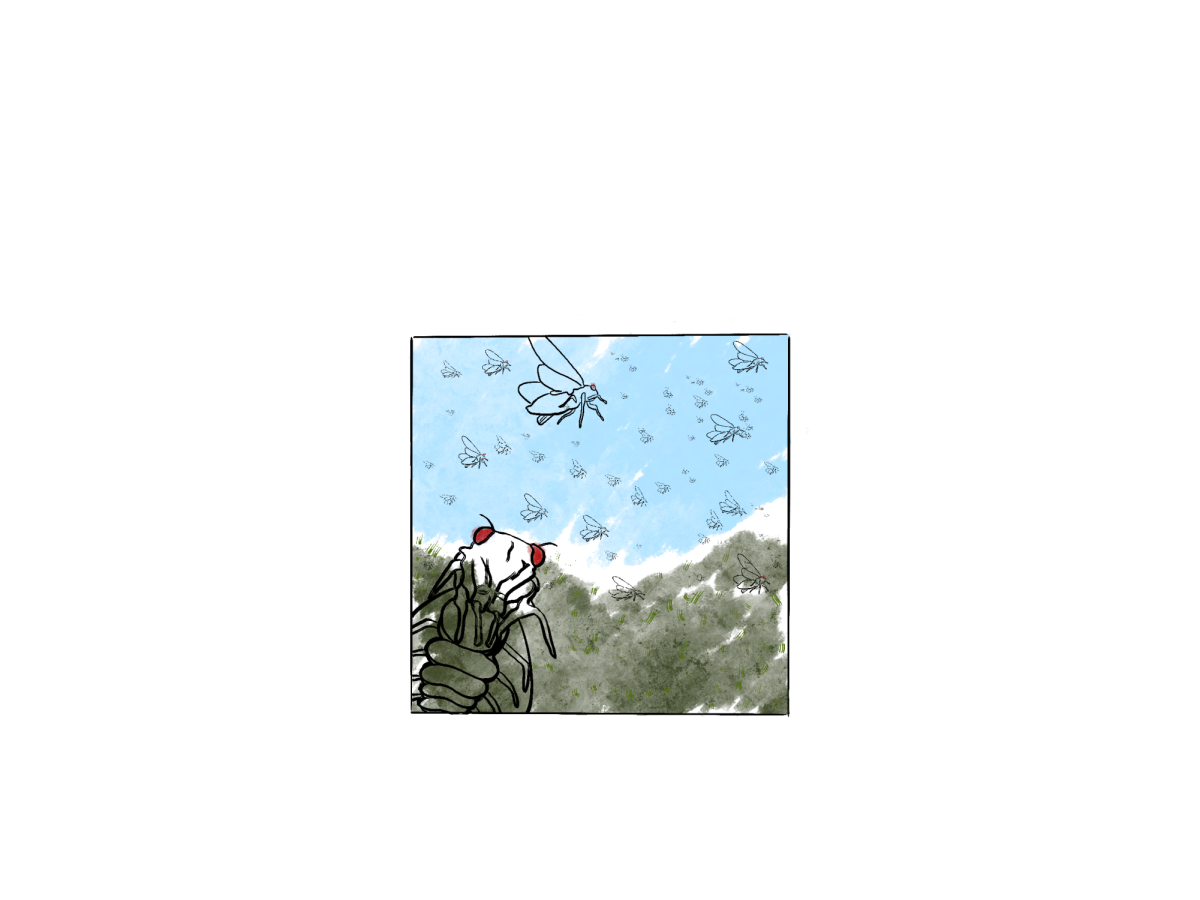For the first time since 1803, two broods, or groups, of cicadas will be emerging in Illinois simultaneously. Central Illinois is expecting 13-year Brood XIX, while the 17-year Brood XIII will be present near the Chicagoland area, including Downers Grove. Starting in late May and ending in June, it is estimated that Illinois will experience 50,000 to 1.5 million cicadas per acre, according to NBC.
Scientists and students alike can indulge in the fact that there are two broods emerging at once, and can study their behaviors as they begin to appear. According to the University of Illinois College of Agriculture, Consumer, and Environmental Science, the cicadas spend most of their life cycle feeding on sap from tree roots underground. When they are transforming from nymphs into adults, they emerge back above ground when the weather gets warmer.
“My dog always brings them inside and it’s hard to avoid them while I’m running outside. They are just everywhere, and I know this year will be worse,” junior Makenna Purgatorio said.
Known for their distinctive buzz, many find cicadas to be a disturbance. However, cicadas pose no physical threat to humans and are a vital part of the ecosystem. The emergence of Brood XIII is a bonanza for other local wildlife, serving as food for birds and small mammals. It is also a chance for scientists to study cicada behavior and their impact on the environment. According to the Morton Arboretum, these cicadas are harmless to humans, but there will be millions of them. Particularly in areas with lots of mature trees, their mating calls will be very loud and may be a nusiance.Downers Grove residents will see Brood XIII until late June, with a return in 2041 as they restart their 17-year life cycle.
“I remember my mom telling me how the last time the cicadas came there were so many that she didn’t even let me play outside for a while. If that was only one group, I wonder what two will look like,” senior Amelia Hansen said.



